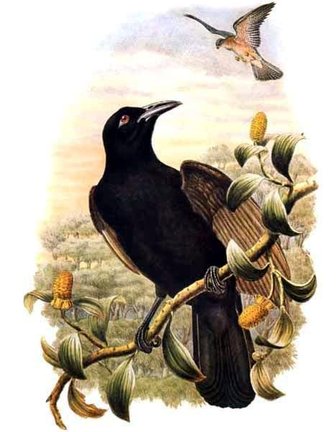Paradise-crow
One of the few monogamous birds of paradise, the Paradise-crow is endemic to lowland forests of the Maluku islands in Indonesia. The diet consists mainly of fruits and arthropods. Three subspecies are recognized, with the nominate subspecies having the least or no white patch on the inner flight feathers.

The Paradise-crow is classified as Least Concern. Does not qualify for a more at risk category. Widespread and abundant taxa are included in this category.
The manucodes and Paradise-crow, which are socially monogamous, are sexually monomorphic. So are the two species of paradigalla, which are polygamous. All these species have generally black plumage with varying amounts of green and blue iridescence. Habitat and distribution - Brown Sicklebills are montane species The centre of bird-of-paradise diversity is the large island of New Guinea; all but two genera are found in New Guinea. More
One of the few monogamous birds of paradise, the Paradise-crow is endemic to lowland forests of the Maluku islands in Indonesia. The diet consists mainly of fruits and arthropods. Three subspecies are recognized, with the nominate subspecies having the least or no white patch on the inner flight feathers. A common species throughout its habitat range, the Paradise Crow is evaluated as Least Concern on the IUCN Red List of Threatened Species. It is listed on Appendix II of CITES. More
Paradise-crow is the only member of its genus. It is not a true Crow, but a member of the Bird-of-Paradise family Paradisaeidae. More

Family : Paradisaeidae
Genus : Lycocorax
Species : pyrrhopterus
Authority : (Bonaparte, 1851)

